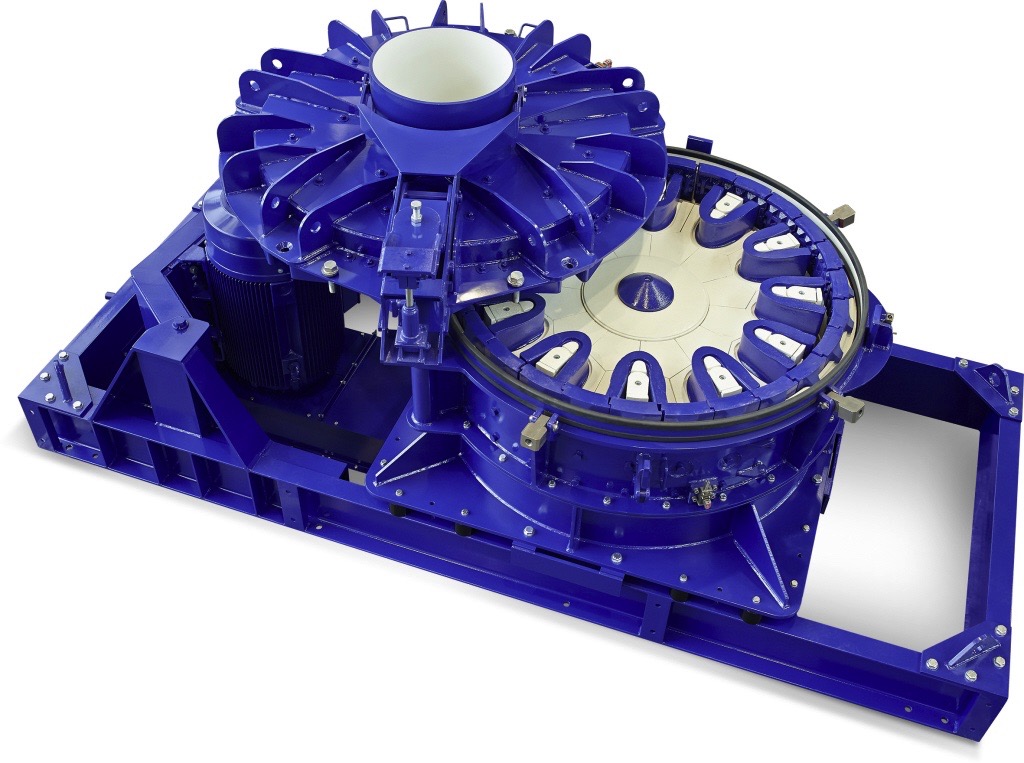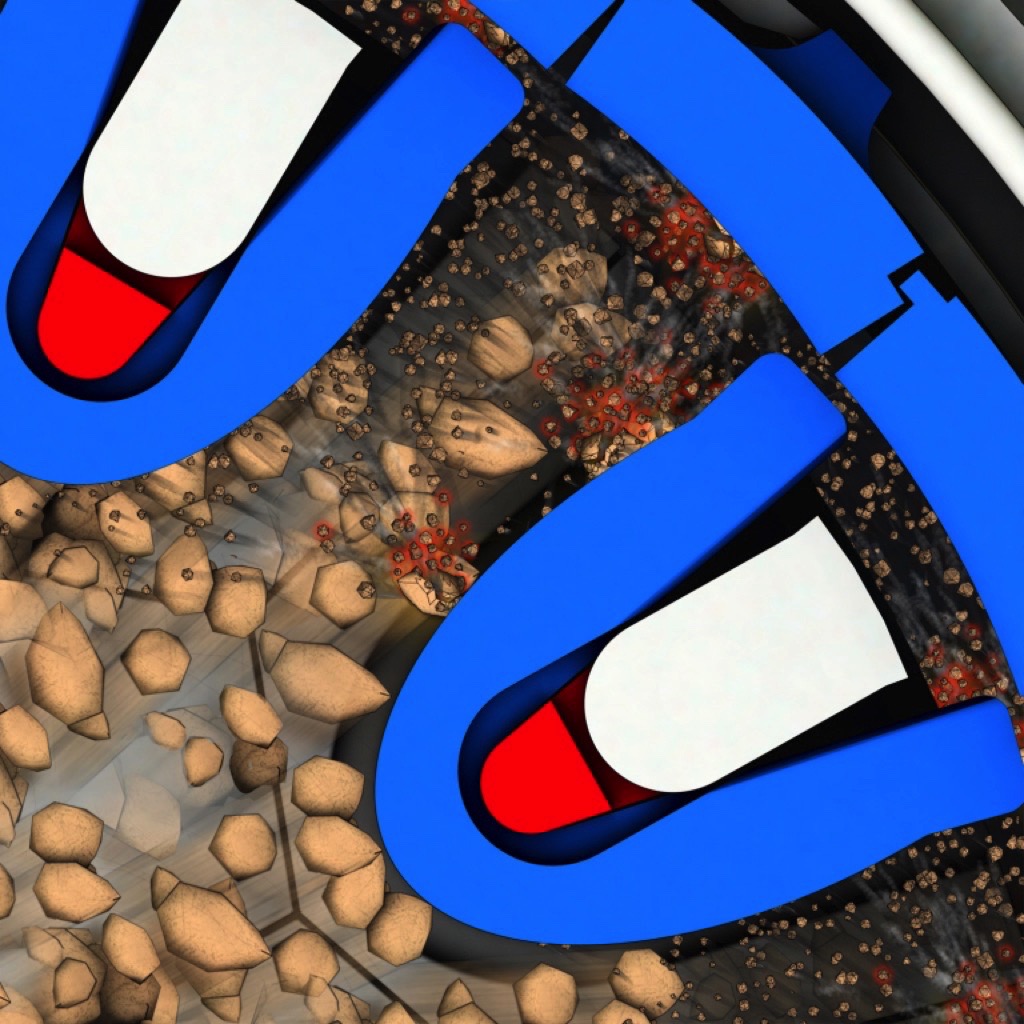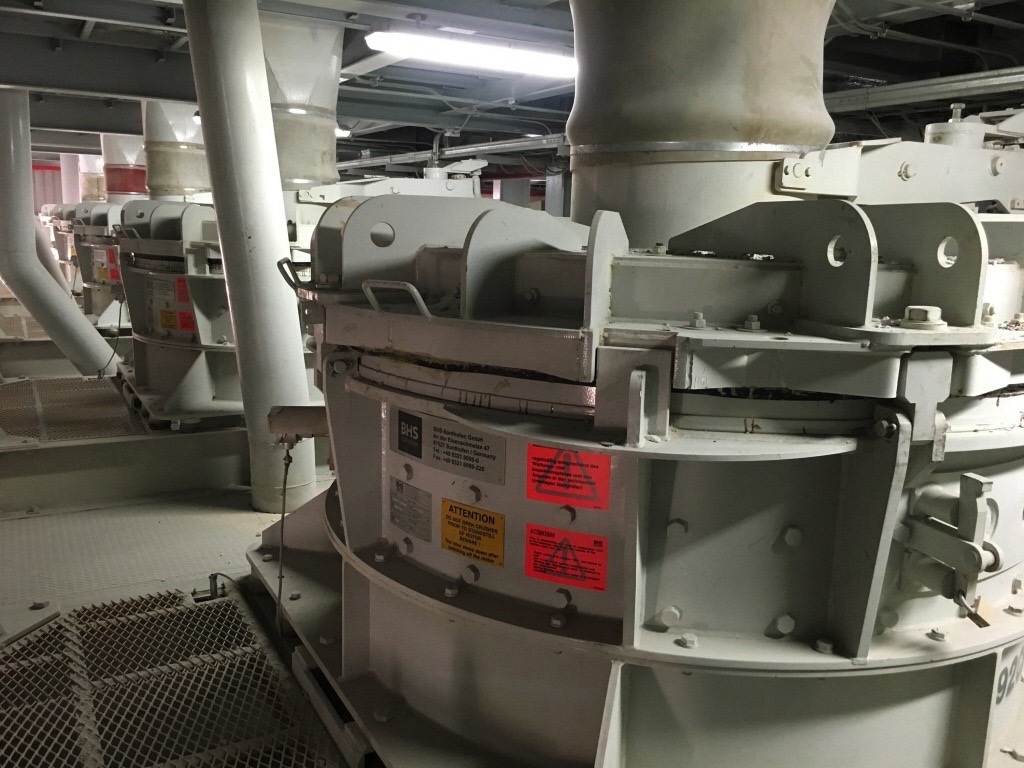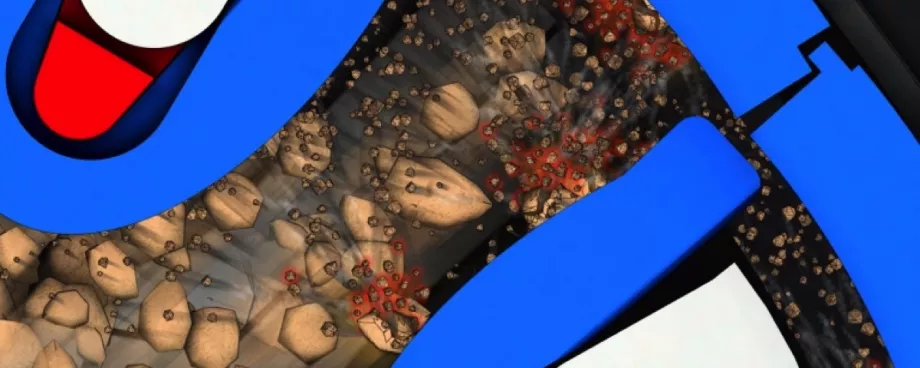(From the archive of ”bulk solids handling", article published in Vol. 36 (2016) No. 5 , ©2016 bulk-online.com)Sand is becoming a scarce product worldwide. today, even some desert region must purchase sand from other countries, that must mostly be shipped thousands of miles. The shortage of sand is so blatant that some countries have actually banned its export.The reason for the shortage is the fact that the shape and size distribution of natural sand, which is found, for example, in desert sand, make it unsuitable as a building material. Furthermore, this sand also contains contaminants and must be extensively washed, treated and dried before utilisation, which drives the costs upwards.The BHS rotor impact mill, frequently referred to in professional circles as the “Sandmaker”, will not solve the problem, but will alleviate it somewhat. It produces crushed sand with a cubical grain shape from rocks, which is very well suited as an additive for concrete or for the production of other building materials. The machines convert up to 70 tons of rock per hour into sand.
The Rotor Impact Mills Type RPM

The BHS rotor impact mill is a high-power crushing machine with a vertical shaft. The rotor is shaped like a ring and equipped with horseshoe-shaped hammers. This unique impeller rotor in combination with the toothed anvil ring achieves selective crushing and an outstanding grain shape. The mill is suitable for the crushing of all lightly to moderately abrasive minerals with a maximum feed material size of up to 56 mm (2 1/4 in).Intensive impact and shear crushing occurs between the horseshoe-shaped impact hammers and the toothed anvil ring. The machine can be adjusted to your requirements in an optimum manner using the rotor speed and the variable annular gap.The BHS rotor impact mill will achieve a sand yield of up to 80%, depending on the hardness and grain size of the feed material.
The Function

The feed material is fed into the machine from above using the central input nozzle. When it hits the rotor, it is accelerated outwards by the centrifugal forces, struck by the horseshoe-shaped impellers, and hurled against the anvil ring. Here, the crushing takes place by means of the impact and shearing effect. The material recoiling from the anvil ring hits the hammers again, where it is crushed by the repeat impact and slung back against the anvil ring. This process is repeated several times and causes the intensive, multiple strain on the feed material. The material leaves the rotor through the gap between the rotor and the anvil ring and falls downwards through the two discharge chutes.The mill can be alternately operated with clockwise and counterclockwise rotation, which reduces the wear on the hammers.
Utilisation
The BHS rotor impact mills produce well graded sand in the proper shape with optimal grading curves which are exactly adapted to the “dry mortar” application. The good cubicity of the sand grains is crucial for enabling the mortar to be processed easily and for ensuring its good pumping capacity.

These properties have contributed to the fact that a large number of dry mortar plants worldwide are operated with BHS machines. One of the most important sales markets is Southeast Asia. Dry mortar in Southeast Asia is often not only used as plaster for outdoor and indoor surfaces or as masonry mortar or screed, but rather especially for fine finishing plasters. In contrast to Germany, colored plasters are frequently used in Thailand, as are rough plasters, which have a particularly decorative structure and are coated without priming.The requirements for the fineness of these products and thus for the properties of the sand are equally extraordinary. Particularly high-grade products are manufactured especially in Thailand, where sand with a grain size between 90 and300 µm is used. Here, a grain with a diameter of half a millimeter is already considered a coarse grain.Crushing the rocks and sifting out the oversized grains is not sufficient to achieve the specified grading curve. The crushed rock must instead be selectively broken down into fractions and then put back together into a precisely defined grading curve in accordance with prescribed formulas.Rotor impact mills have particularly proven themselves here, since the properties of the discharged product can be precisely set by adjusting the circumferential speed of the rotor and the width of the annular gap. This makes it possible to produce sand with grading curves which precisely conform to the specification.Twelve BHS rotor impact mills are currently operating on the premises of Thailand’s leading dry mortar manufacturer, Siam Mortar, with ten more already having been delivered and set for commissioning in 2016. BHS delivered three additional machines for a project with another Thai manufacturer – also for dry mortar.Moreover, Siam Mortar is operating four BHS VSI rotor centrifugal crushers of type RSMX for the crushing of granite – also for the production of dry mortar sand. In brief, more than 30 BHS machines are operating in the dry mortar industry in Thailand.Philipp Parnitzke, BHS Area Sales Manager for Asia and the Pacific, explains the success in Thailand: “Our unique selling point is the fact that the rotor impact mills produce sand with cubical grain shape in finely graded fractions having precisely the grading curve required for dry mortar sand. It meets the requirements of our Thai customers exactly. Moreover, they can be serviced easily and quickly and exhibit little wear in proportion to their high production output.”The rotor impact mills from Sonthofen have become almost a standard in Thailand. This is proven, for example, by the fact that Siam Mortar awards contracts for new dry mortar plants to various plant constructors, but always insist on the BHS rotor impact mills in every single project.The crushing of the feed material can be selectively controlled by variation of the rotor’s circumferential speed on the one hand, and by changing the gap width between the rotor and the anvil ring on the other hand. The impact hammers can be adjusted with just a few hand movements.
| About the Authors | |
| Roland SchmidBHS-Sonthofen, Germany |
■







